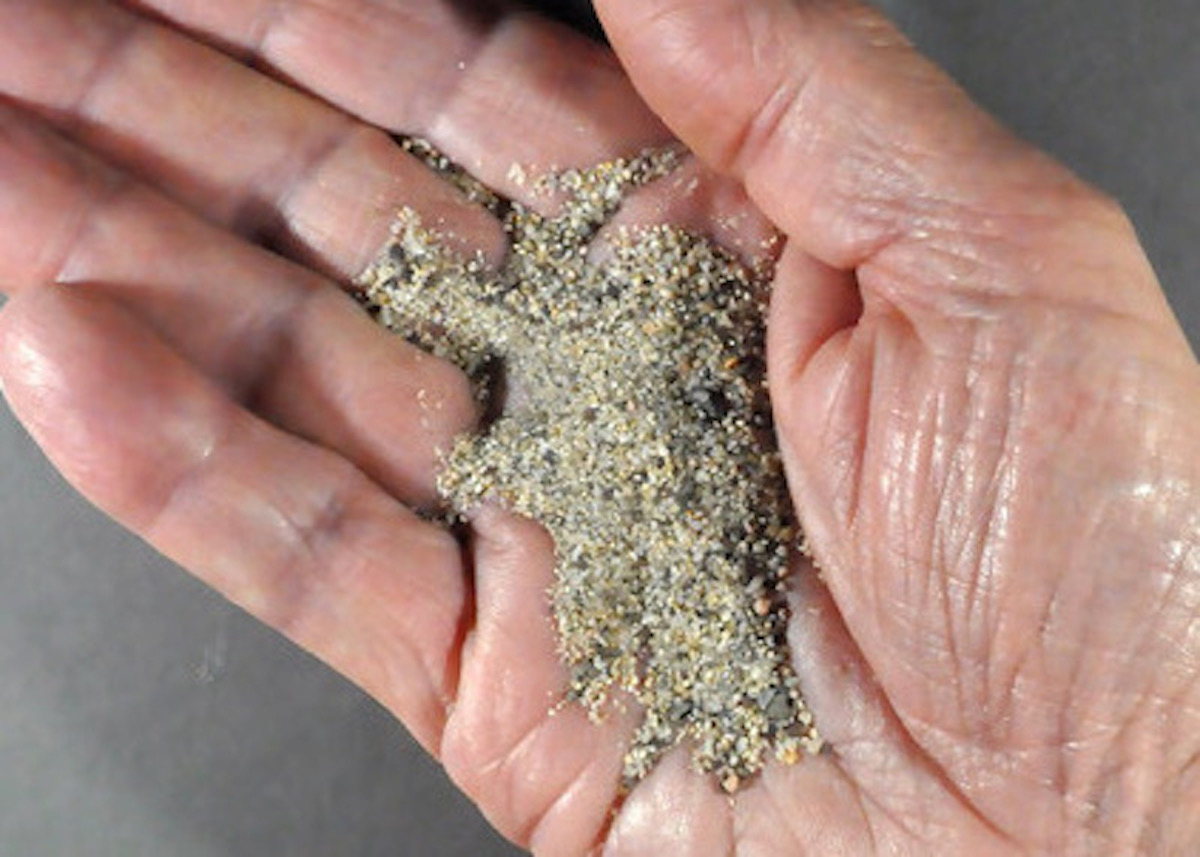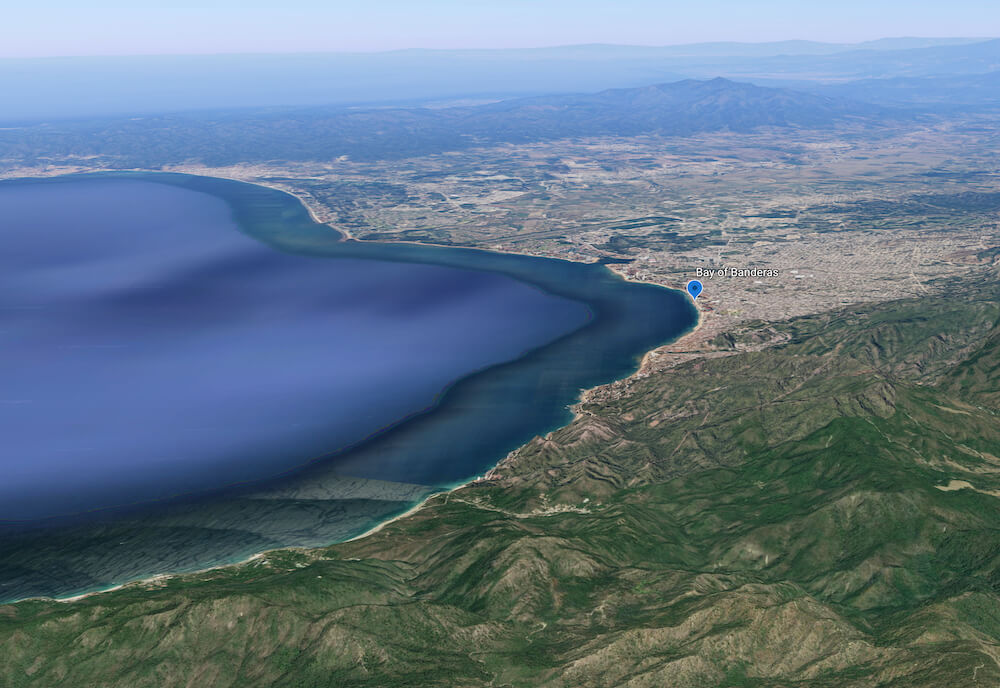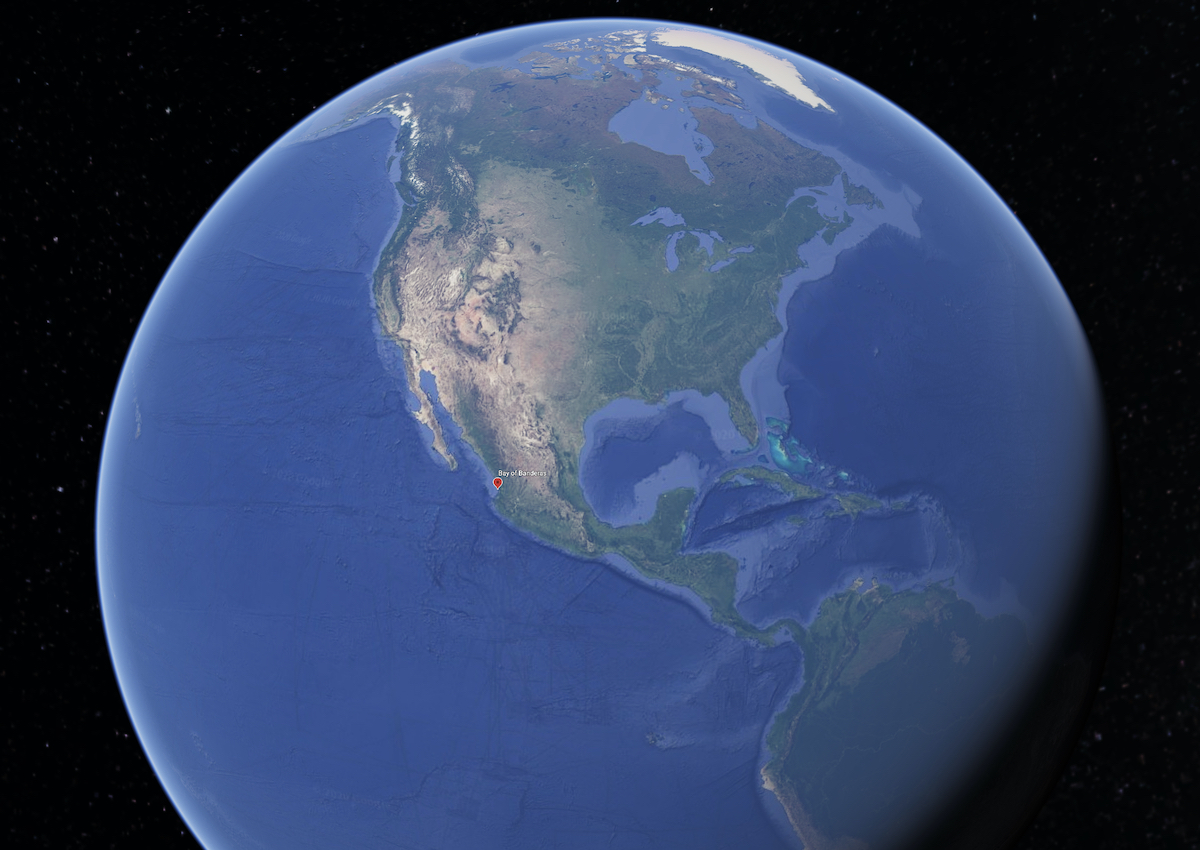
Beach sand from the Bay of Banderas is a variable mixture of colorful sand grains mostly 1 millimeter or less in size with angular edges geologically indicative of relatively young sand. The clear grains are quartz and the yellow-orange and opaque grains are feldspar. Red, greenish and black grains are remnants of the volcanic activity in this area millions of years ago. The highest magnification reveals features of metamorphic sand grains.


Geographic Overview
The horseshoe shaped Bay of Banderas (Bahia de Banderas) is on the Pacific Coast of Mexico with a 62-mile (100-kilometer) coastline flanked by the Sierra Madres as a backdrop. The local economy is based on tourism, sea fishing and agriculture. Banderas Bay is a major breeding and birthing site for humpback whales. Geologically Bahia de Banderas is believed to be the site of the original attachment point of the southern cape of the Baja California Peninsula that was rifted off the North American Geological Plate millions of year ago resulting in the formation of the Gulf of California.







